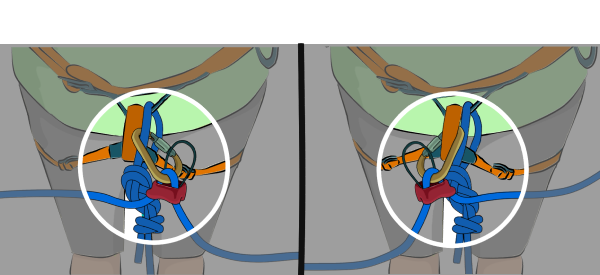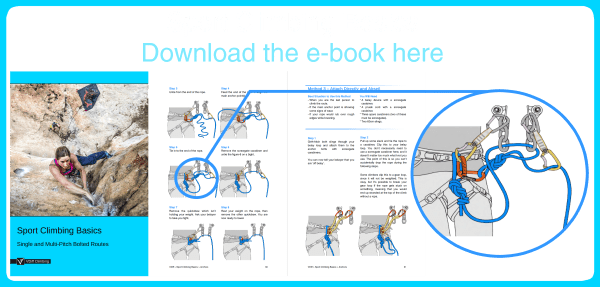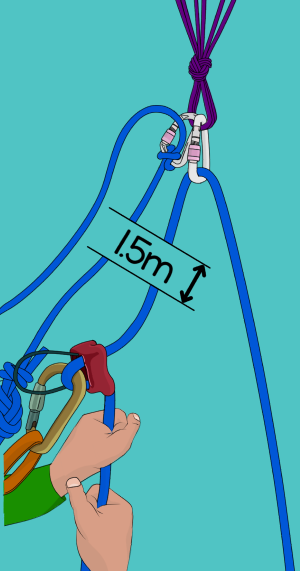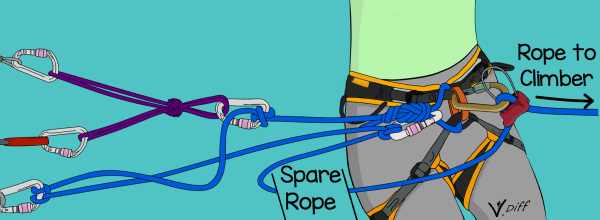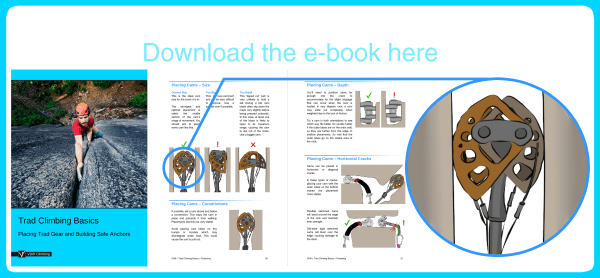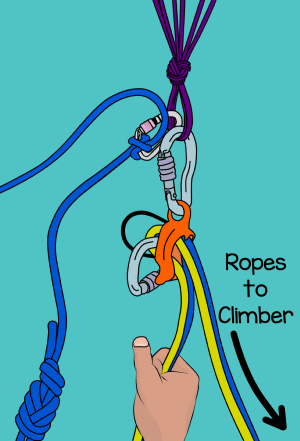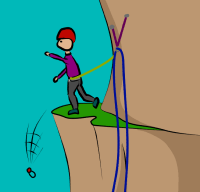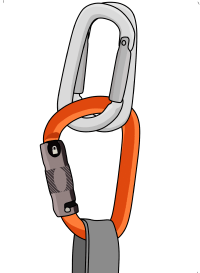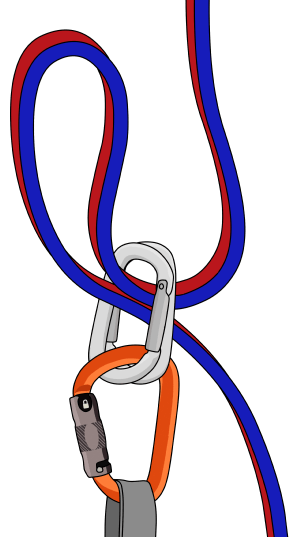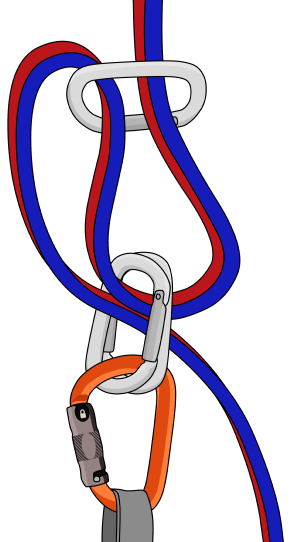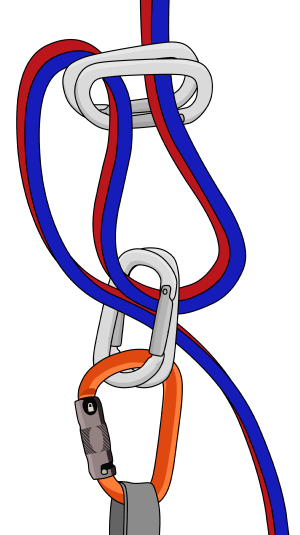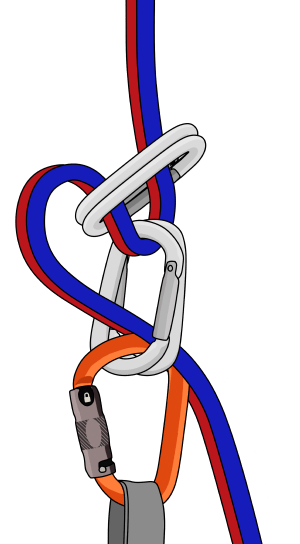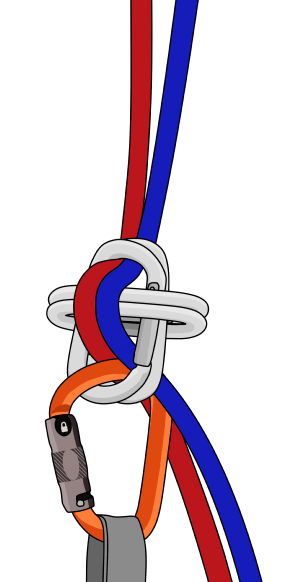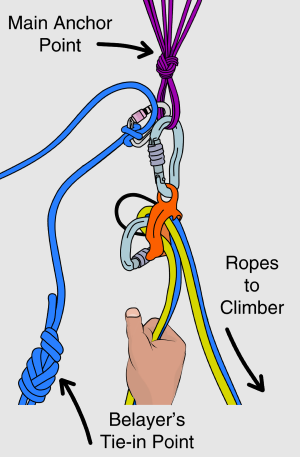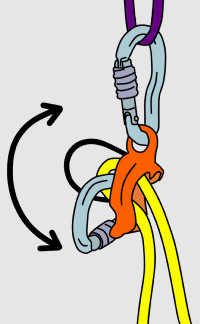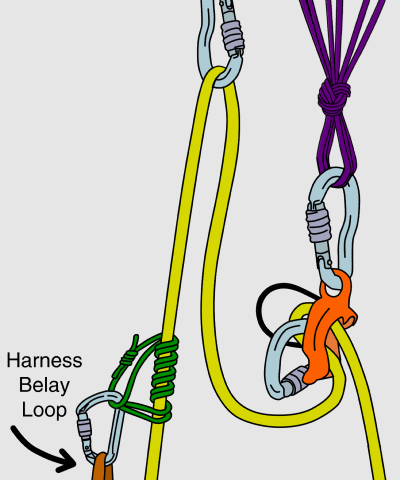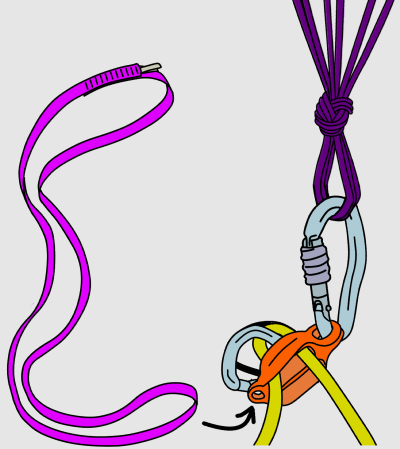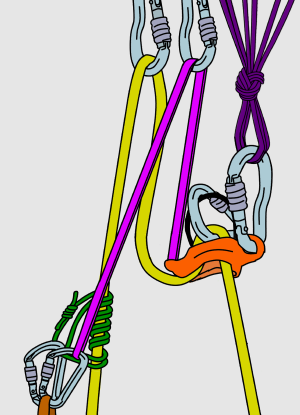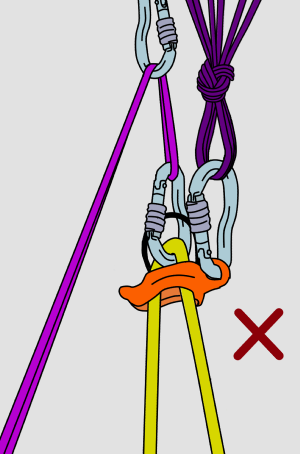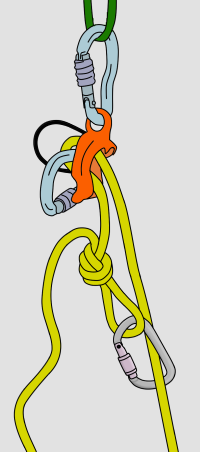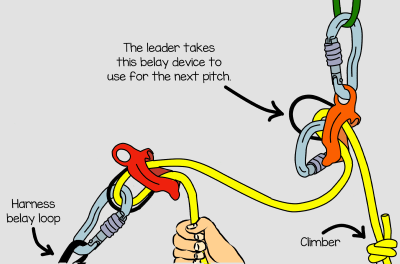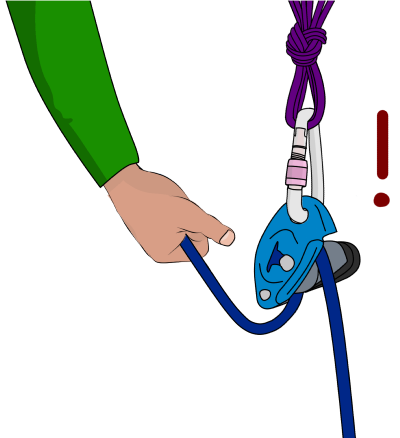'Sport Climbing Anchors - Belaying from the Top' is part of the book - Sport Climbing Basics.

For most sport climbs, you will belay from the bottom – just like you would at the indoor gym. However, you should belay from the top of the route when the anchor is in a poor position to lower from or abseil, or if you intend to walk off the top.
Step 1 - Equalize
Attach a cordelette to the anchor in the same way as if you were setting up a top rope.
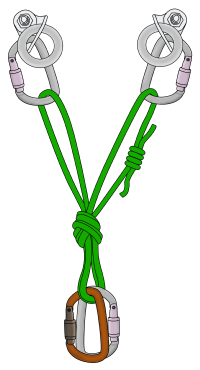
Step 2 - Attach
You'll need to attach yourself to the anchor in a way that you can see your partner as they follow the pitch and brace yourself if they fall. Once you are tight to the anchor, make sure you are positioned in a straight line between the central anchor point and the climber. You shouldn’t be pulled sideways if the climber falls.
You'll often need to extend your anchor to get into the optimal belay position. There are many ways to do this, each with their own advantages and limitations. The most common attachment and belay methods are described below.
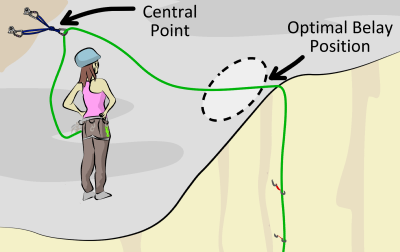
Step 3 - Choose a Belay Method
Pull up all the slack rope in the system until it's tight on your partner, then choose a method to belay them.
Three of the most common belaying methods are described below. It's important to understand the advantages and limitations of each, and be able to adapt these methods to suit any situation.
Attaching to Sport Climbing Anchors
Method 1 - Clip Directly
Clip your belay loop into the central point directly with a screwgate carabiner.
Advantages
- Simple
Disadvantages
- No dynamic aspect to the anchor (using the rope is much better. See methods 2-4)
- Very difficult to adjust belay position
Best Situation to Use this Method
If extending the anchor with the rope would put you in a bad position to belay.
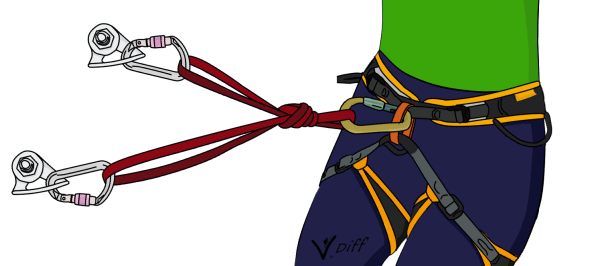
Method 2 - Tie to the Central Point
Tie your rope to the central point using a clovehitch. Then fine-tune your belay position by adjusting the clovehitch; just shuffle rope through and pull it tight. The rope between you and the central point will need to be fairly tight.
Advantages
- Only uses a small amount of rope
Disadvantages
- Belay position must be close to the central point
Best Situation to Use this Method
If the central point is within reasonable reach of your belay position (up to 2 meters or so).
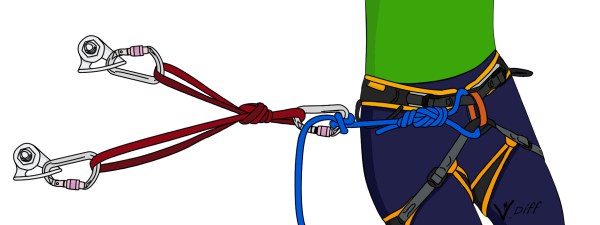
Method 3 - Loop Through the Central Point
Clip the rope through the screwgate on the central point, then walk to your belay position. Attach a screwgate to your rope loop and then clovehitch the rope to it.
Advantages
- You can fine-tune your belay position without moving back to the anchor.
Disadvantages
- Uses more rope and one extra screwgate than method 2
Best Situation to Use this Method
If the central point is out of reach from your belay position.
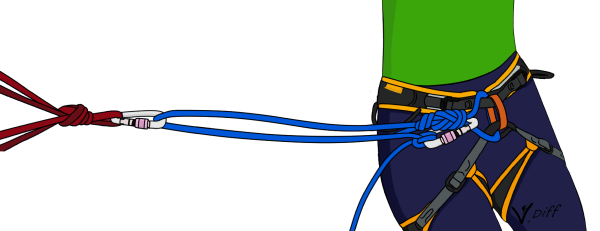
Method 4 - Attaching Directly to the Bolts
Clovehitch the rope to both bolts, leaving a little slack between the two. Then clovehitch the rope to your rope loop with another screwgate.
Advantages
- Equalizes two points
- Doesn’t require using a cordelette
Disadvantages
- Must be close to the anchor in order to fine-tune your belay position.
- The central point is created at your belay loop. This means that you must belay directly from your harness (you can't use guide mode).
Best Situation to Use this Method
If you forget to bring a sling/cordelette.
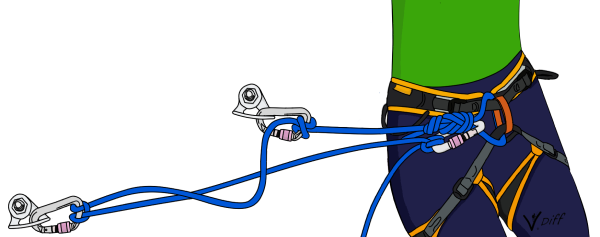
Sport Climbing Anchors: Belaying from the Top
Method 1 - Redirected Belay
Clip another screwgate carabiner to the central point and run your partners rope through this, then down to your belay device. You'll be able to belay as you normally would on a top rope.
Your belay device will need to be at least 1.5 meters away from the central point. This reduces the chance of you being sucked into it if your partner falls.
Also, make sure that the rope isn't rubbing against your attachment knot at the central point.
Advantages
- Most of the weight of a falling climber is transferred to the anchor, not your harness.
Disadvantages
- It's possible to get pulled into the central point if your partner falls, particularly if they are heavier than you. In this case, there is a real danger of losing control of the brake rope.
Best Situation to Use this Method
When you have a nice ledge to stand on and the central point is just above your head.
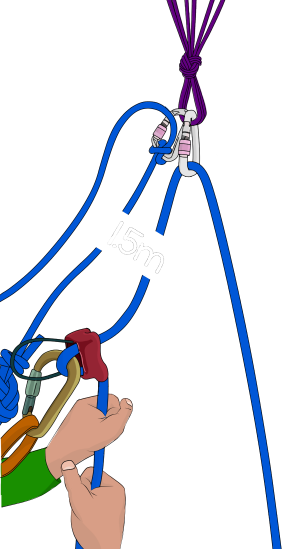
Method 2 - Belay Directly from your Harness
Attach your belay device to either your belay loop or rope loop. This can be set up so the brake rope comes out of either the top or bottom of the belay device – choose whichever way is easier to lock off the brake rope.
In most situations, the weight of a falling climber will pull down from you, not up. Because of this, you will need to lock off upwards not downwards.
Advantages
- You can use this method for almost every belay situation.
Disadvantages
- If your partner falls, it's possible that their weight will pull uncomfortably on your harness or over your legs.
Best Situation to Use This Method
If you have used your rope to equalize the anchor.
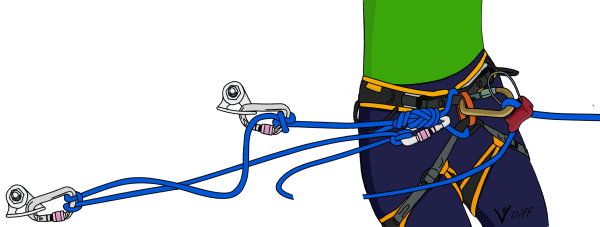
Method 3 - Guide Mode
Some belay devices have a 'guide mode' function - they can be set up in a way which locks automatically if a climber falls. They can be used as a normal belay device too. Guide mode often works well on sport climbing anchors.
Read our article about how to use guide mode.
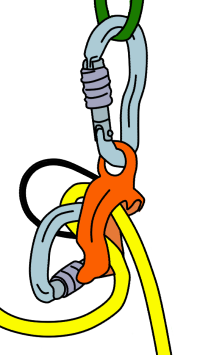
Where to Put the Spare Rope
There are basically two options. Either stack it into a neat pile somewhere or stack it through a sling.
For the sling method, start by pushing a long loop of rope through the sling. Continue doing this, making smaller loops each time (bigger loops are more likely to get tangled into each other when you are belaying the leader on the next pitch).
However you choose to stack the rope, make sure it is within reach and that you can do it one-handed; you'll need to belay at the same time!
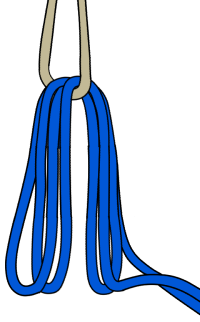
Rope Loop or Belay Loop?
You can belay either from your belay loop or from your rope loop.
In some situations, using the rope loop can be more comfortable - it allows you to transfer the weight of a fallen climber onto the anchor, rather than having their weight pulling on your harness.
If you are unsure, just use your belay loop.
